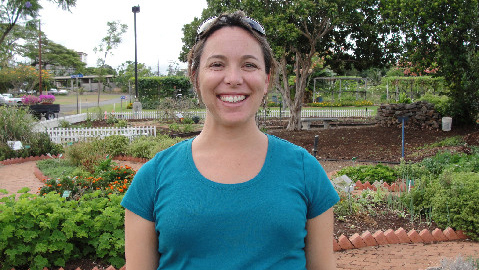 From the H-I Freeway westbound, if you look down towards Home Depot in Pearl City, you’ll get a quick glance at some of the most productive 30 acres on the island. It’s called the Oahu Urban Garden Center and what grows there is the heart of urban horticulture. The OUGC is owned by the University of Hawaii College of Tropical Agriculture and Human Resources Cooperative Extension Service. The property once served as a community garden but now offers educational urban horticulture programs to the public.
From the H-I Freeway westbound, if you look down towards Home Depot in Pearl City, you’ll get a quick glance at some of the most productive 30 acres on the island. It’s called the Oahu Urban Garden Center and what grows there is the heart of urban horticulture. The OUGC is owned by the University of Hawaii College of Tropical Agriculture and Human Resources Cooperative Extension Service. The property once served as a community garden but now offers educational urban horticulture programs to the public.
Urban Horticulturist, Jayme Grzebik has a great passion for her work at the Oahu Urban Garden Center. On a recent visit to her portable classroom office which is just a few yards from the properties very impressive herb garden, Grzibeck helped me solve a mite problem that currently occupies a Hibiscus plant in my yard. Just like that, she produced information with regard to the remedy that I tucked away for safe keeping.
That’s her job and she’s very good at it. Actually, after walking around the grounds and meeting staff that included Master Gardeners, ground maintenance workers and a core of volunteers, I came to the conclusion that this was a great place to work. I found a group of dedicated individuals that are making a difference in the community. My hope is that others will be inspired by this MyPC Q&A featuring Jayme Grzebik and her work to learn more about what the Oahu Urban Garden Center has to offer to our community.
Q1: What is your role in the Oahu Urban Garden Center?
A: “I’m an Extension Agent with the University of Hawaii and there are two other Extension Agents here, Steve Nagano and Mel Wong. What I do is work with home gardeners and they’ll call with problems in their landscape or at their home. For example, you can see around my office that I usually have bugs or dead plants and people bring all kinds of things to me.
I try to assess the problems either by someone describing it to me over the phone or bringing in a sample and then we try to come up with the most environmentally sensitive way to address the problem. It’s all based on research. There is so much information research going on at the University to help the home gardener. I’m the bridge from the University out to the public.”
Q2: Are there other programs that you specialize in?
A: “My big job is to coordinate the Oahu Master Gardener Program. There is actually a Masters Program on each island, so each county has their own.”
Q3: How does the program work?
A: “We train volunteers on this island, its 19 weeks of training. Every Friday we meet and we learn about tropical gardening and environmentally sound gardening practices from faculty and research agents from the University of Hawaii.”
Q4: What happens to the volunteers after the 19 weeks of Master Gardener training?
A: “Once those volunteers are trained, when they graduate from class, they owe us 50 hours of volunteer service for the community. They also assist with the Master Gardener Hotline that the public calls for help.”
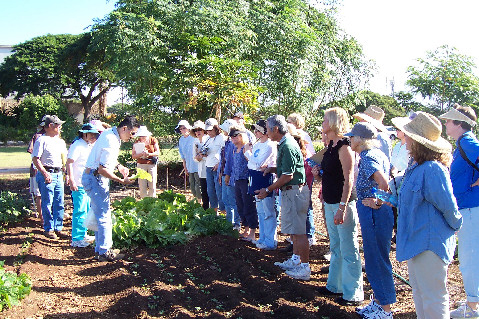
UH Master Gardeners learning with UH Specialists
Q5: Did your passion for growing things happen at an early age?
A: “For me it was probably 6 or 7 years old. I remember being outside, we had marigolds, we were living in New Mexico and my mother pulled the seeds out of a dead marigold and there must have been a hundred seeds that my mother put in my hand and said we are going to plant these seeds. I remember it was really neat. One plant can turn into a hundred.”
Q6: How important is it to start kids out at an early age?
A: “I know from research that actually says the earlier you start the more you’ll be aware of where food comes from and just as aware of our environment.”

Q7: Tell us about the Children’s Gardening program such as “The Pizza Garden” that grows plants that are found on a pizza?
A: “My background is in Children’s Gardening Programs. I’ve seen children’s gardens throughout the country that are large or very small. What’s neat about the pizza garden is that it’s something that a teacher could take to school. Just a piece of all of our ideas out there. The pizza garden is very doable, even at your house.”
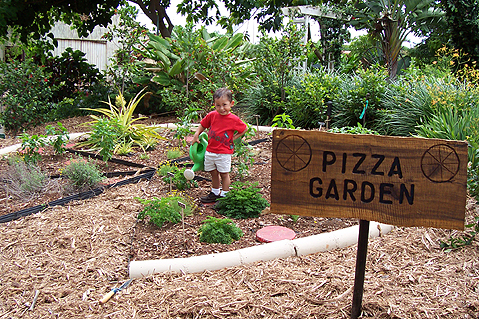
Pizza Garden
Q8: Does the Urban Garden Center offer tours for schools?
A: “Yes, Steve Nagano coordinates all the school programs. Throughout the school year we do tours on Tuesdays. We have volunteers that are docents that help Steve take groups of 15 around in the garden. They’ll go through the veggie garden, herb garden; they’ll go through the Children’s Garden and really learn about what types of plants are out there and where they come from. It’s very interactive, it’s very hands on.”
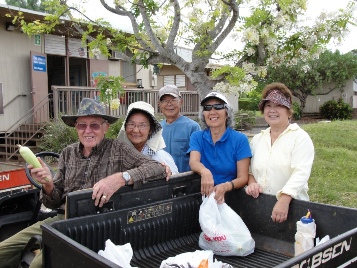
Q9: What’s new for future growth of the Garden Center?
A: “Well we have different collections that we are looking at; we would like to do a rose collection, so we would like to work with the Honolulu Rose Society. We do have plans for a taro collection.
Also, some different collections that we will be putting in just based on the publics interest. There’s a big organic movement for example right now. There’s a white fence that surrounds the herb garden that has four quadrants, each quadrant is a different themed herb garden, culinary herbs, medicinal herbs, and spices. The last quadrant will actually be a composting demonstration, a rain garden and we’ll demonstrate cover crops in small spaces.”

Q10: So there’s a program that allows the public the opportunity to get up close as the demonstrations are taking place?
A: “We have a program every month that we will have Master Gardeners and Urban Garden Center volunteers that will go out there and they are mending the soil and they are pulling up plants and propagating the plants. People will actually stand outside of the white fence and watch these people turn
in chicken manure and compost and bone meal. They definitely want to see that being done.”
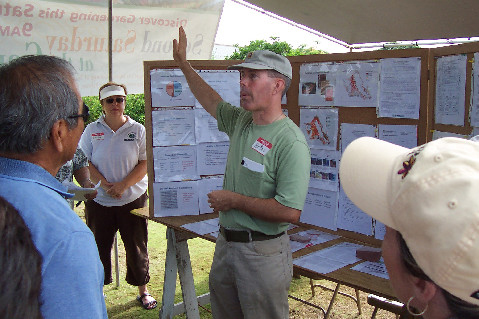
Public learning Soil Samples form Certified Master Gardeners.
Q11: How important is the service and education that the Oahu Urban Garden Center provides?
A: “It is important to our environment and especially because we are on an island to be able to make the right decisions. I want to make sure that the fertilizers that are put on the plants are being taken up by the plants and not just leached out into the environment, into the oceans and the eco systems.”
*For more information about the Oahu Urban Garden Center log on to: http://www.ctahr.hawaii.edu/ougc/